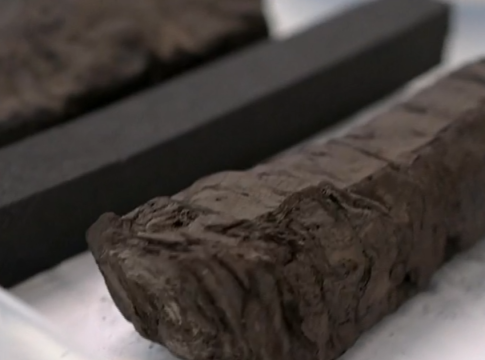Unearthing the Past: AI Breathes New Life into Ancient Roman Scrolls
The Vesuvius Enigma
Artificial intelligence (AI) is making waves in a groundbreaking project aimed at deciphering ancient scrolls from the Roman Empire—specifically those buried under volcanic ash when Mount Vesuvius erupted in A.D. 79. This catastrophic event obliterated the towns of Pompeii and Herculaneum, but it also preserved a remarkable artifact: an ancient library containing approximately 1,800 carbonized papyrus scrolls. These scrolls represent the only intact library from antiquity, yet efforts to read them have often ended in disappointment—transforming potential knowledge into mere ashes.
Innovative Technologies Unleashed
The challenge of reading these delicate scrolls has long vexed archaeologists and researchers alike. Thanks to advancements in 21st-century technology, however, researchers are beginning to decode these ancient texts successfully. Central to these efforts is the use of a particle accelerator based in England, which produces light intensity that surpasses even that of the sun—similar to an advanced X-ray. This technology has opened a window into the scrolls, allowing researchers to identify ink, even when it is barely visible.
Brent Seales, a computer scientist from the University of Kentucky and a leading figure in this initiative, likened the technology to medical imaging, asking, "If we can see inside the human body non-invasively, why not do the same for cherished artifacts?"
The Vesuvius Challenge
To tackle the daunting task of deciphering the scrolls, Seales initiated the Vesuvius Challenge, a global competition with a prize pool of $700,000. The goal? To incentivize talent to crack the code of these ancient texts. Remarkably, college students emerged victorious, capturing the spotlight by being the first to extract legible words from a scroll nearly 2,000 years old.
The results are not just academic curiosities; they represent a historic breakthrough in both archaeology and AI.
The Road Ahead
With hundreds of scrolls still waiting to be examined, Seales has launched the second phase of the Vesuvius Challenge, with aspirations for even more significant discoveries. He believes that there might be additional unexplored scrolls lying beneath the Villa of the Papyri, hinting at a treasure trove of lost knowledge yet to be uncovered.
"This isn’t just a renaissance; it’s a groundbreaking moment," Seales remarked, expressing optimism for the future of both AI and archaeology.
Implications for the Future
The confluence of AI and archaeology is reshaping how we perceive history. As researchers continue to leverage AI-inspired techniques, the implications extend far beyond the scrolls of Herculaneum. This project serves as a testament to the transformative potential of technology in archaeological research, opening the floodgates for future explorations and discoveries that could redefine our understanding of the past.
In our quest to uncover the layers of history, technology stands as a beacon of possibility, proving that even antiquity can be illuminated through innovation. As we stand on the cusp of new discoveries, one thing is certain: the scrolls of the past are far from forgotten.

Writes about personal finance, side hustles, gadgets, and tech innovation.
Bio: Priya specializes in making complex financial and tech topics easy to digest, with experience in fintech and consumer reviews.

